JavaScript--链表
1.认识链表
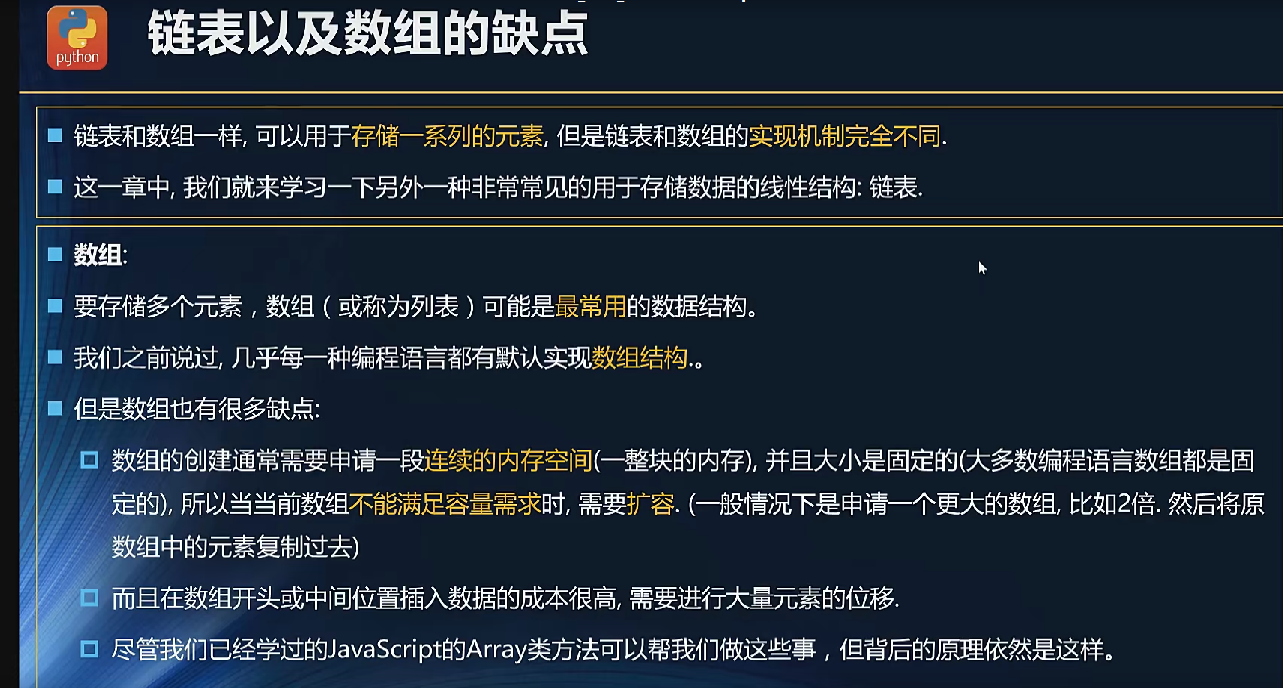
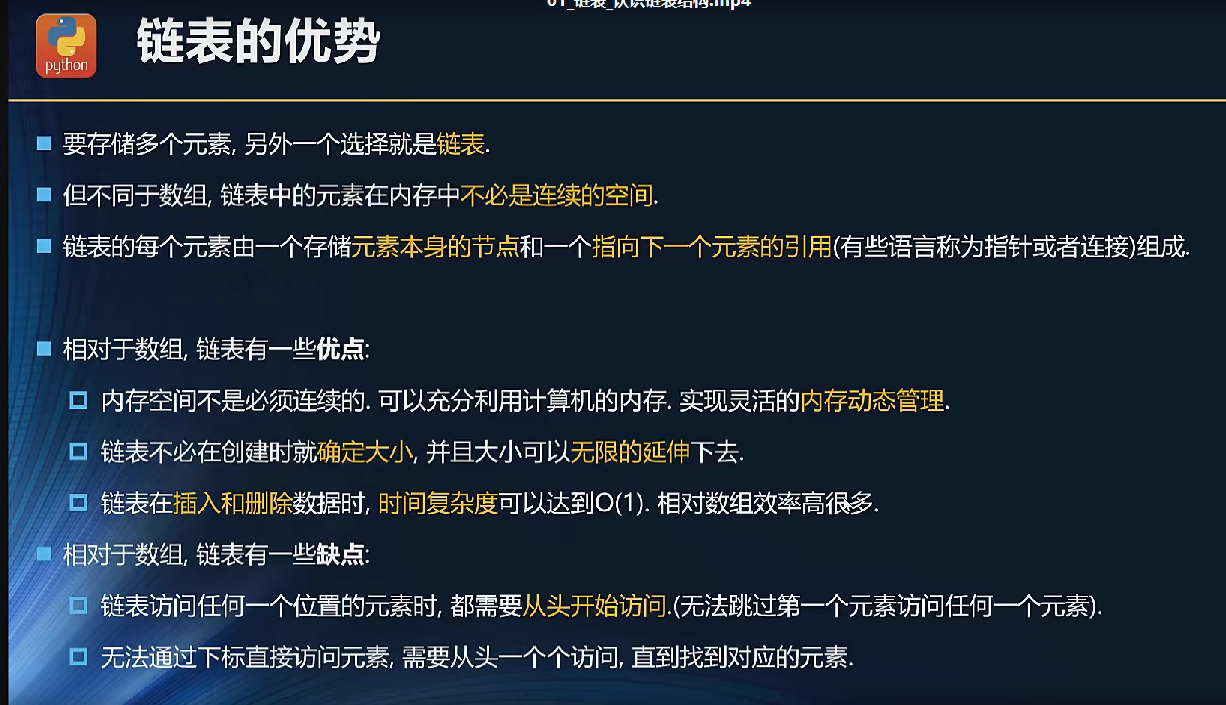
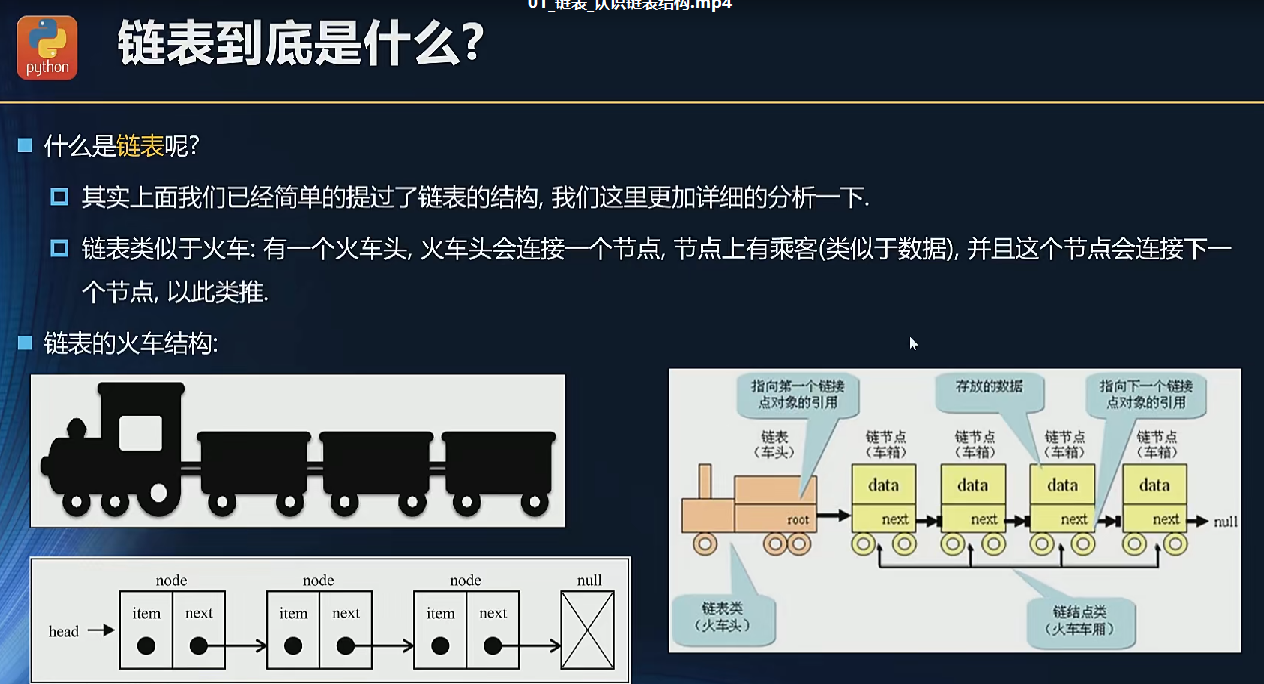
2.封装链表结构
<!DOCTYPE html> <html lang="en"> <head> <meta charset="UTF-8"> <meta http-equiv="X-UA-Compatible" content="IE=edge"> <meta name="viewport" content="width=device-width, initial-scale=1.0"> <title>单项链表</title> </head> <body> <script> // 封装链表类 function LinkedList(){ // 内部的类,节点类 function Node(data){ this.data=data this.next=null } // 属性 this.head=null this.length=0 } </script> </body> </html>
3.链表常见的操作
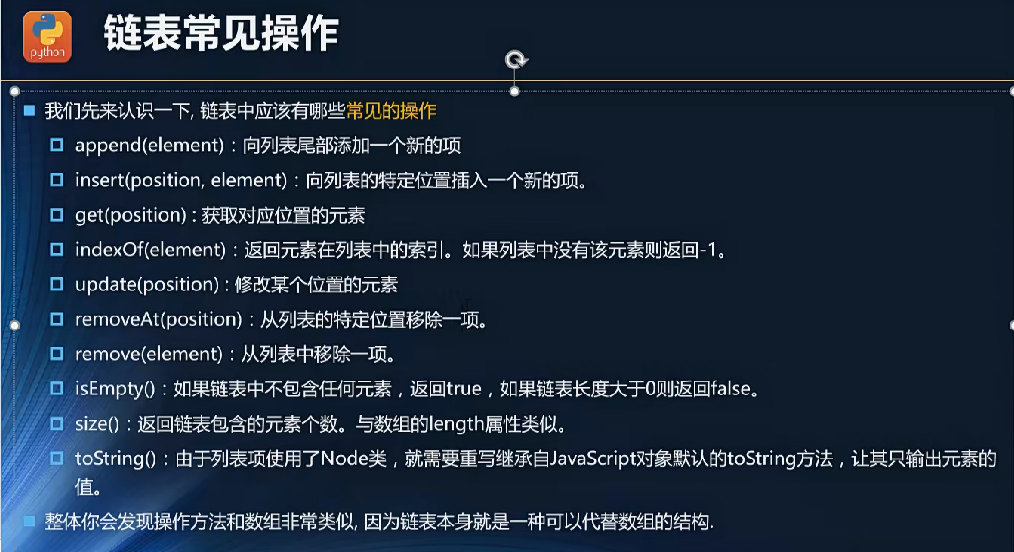
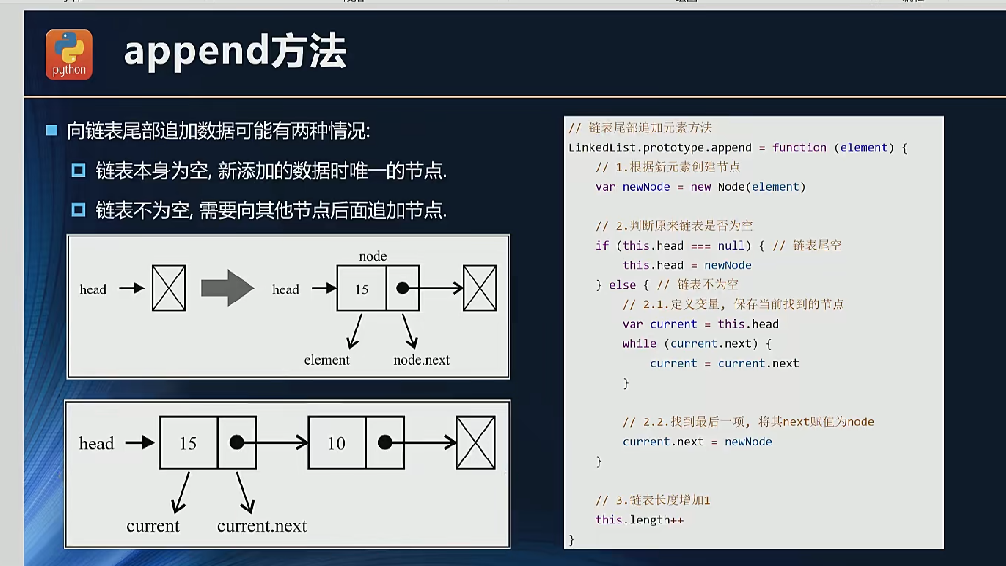
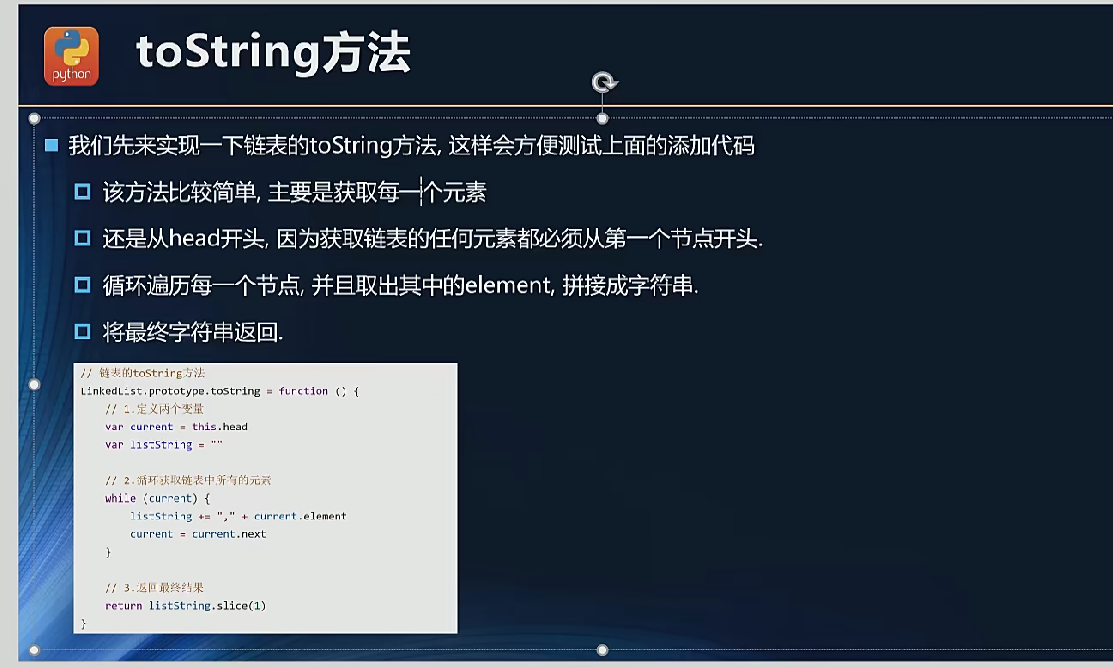
<!DOCTYPE html>
<html lang="en">
<head>
<meta charset="UTF-8">
<title>Title</title>
</head>
<body>
<script>
// 封装链表的构造函数
function LinkedList() {
// 封装一个Node类, 用于保存每个节点信息
function Node(element) {
this.element = element
this.next = null
}
// 链表中的属性
this.length = 0
this.head = null
// 链表尾部追加元素方法
LinkedList.prototype.append = function (element) {
// 1.根据新元素创建节点
var newNode = new Node(element)
// 2.判断原来链表是否为空
if (this.head === null) { // 链表尾空
this.head = newNode
} else { // 链表不为空
// 2.1.定义变量, 保存当前找到的节点
var current = this.head
while (current.next) {
current = current.next
}
// 2.2.找到最后一项, 将其next赋值为node
current.next = newNode
}
// 3.链表长度增加1
this.length++
}
// 链表的toString方法
LinkedList.prototype.toString = function () {
// 1.定义两个变量
var current = this.head
var listString = ""
// 2.循环获取链表中所有的元素
while (current) {
listString += "," + current.element
current = current.next
}
// 3.返回最终结果
return listString.slice(1)
}
// 根据下标删除元素
LinkedList.prototype.insert = function (position, element) {
// 1.检测越界问题: 越界插入失败
if (position < 0 || position > this.length) return false
// 2.定义变量, 保存信息
var newNode = new Node(element)
var current = this.head
var previous = null
index = 0
// 3.判断是否列表是否在第一个位置插入
if (position == 0) {
newNode.next = current
this.head = newNode
} else {
while (index++ < position) {
previous = current
current = current.next
}
newNode.next = current
previous.next = newNode
}
// 4.length+1
this.length++
return true
}
// 根据位置移除节点
LinkedList.prototype.removeAt = function (position) {
// 1.检测越界问题: 越界移除失败, 返回null
if (position < 0 || position >= this.length) return null
// 2.定义变量, 保存信息
var current = this.head
var previous = null
var index = 0
// 3.判断是否是移除第一项
if (position === 0) {
this.head = current.next
} else {
while (index++ < position) {
previous = current
current = current.next
}
previous.next = current.next
}
// 4.length-1
this.length--
// 5.返回移除的数据
return current.element
}
// 根据元素获取链表中的位置
LinkedList.prototype.indexOf = function (element) {
// 1.定义变量, 保存信息
var current = this.head
index = 0
// 2.找到元素所在的位置
while (current) {
if (current.element === element) {
return index
}
index++
current = current.next
}
// 3.来到这个位置, 说明没有找到, 则返回-1
return -1
}
// 根据元素删除信息
LinkedList.prototype.remove = function (element) {
var index = this.indexOf(element)
return this.removeAt(index)
}
// 判断链表是否为空
LinkedList.prototype.isEmpty = function () {
return this.length == 0
}
// 获取链表的长度
LinkedList.prototype.size = function () {
return this.length
}
// 获取第一个节点
LinkedList.prototype.getFirst = function () {
return this.head.element
}
}
// 测试链表
// 1.创建链表
var list = new LinkedList()
// 2.追加元素
list.append(15)
list.append(10)
list.append(20)
// 3.打印链表的结果
alert(list) // 15,10,20
// 4.测试insert方法
list.insert(0, 100)
list.insert(4, 200)
list.insert(2, 300)
alert(list) // 100,15,300,10,20,200
// 5.测试removeAt方法
list.removeAt(0)
list.removeAt(1)
list.removeAt(3)
alert(list)
// 6.测试indexOf方法
// alert(list.indexOf(15))
// alert(list.indexOf(10))
// alert(list.indexOf(20))
// alert(list.indexOf(100))
// 7.测试remove方法
list.remove(15)
alert(list)
// 8.测试其他方法
alert(list.isEmpty())
alert(list.size())
alert(list.getFirst())
</script>
</body>
</html>
双向链表
<!DOCTYPE html>
<html lang="en">
<head>
<meta charset="UTF-8">
<title>双向链表</title>
</head>
<body>
<script>
// 创建双向链表的构造函数
function DoublyLinkedList() {
// 创建节点构造函数
function Node(element) {
this.element = element
this.next = null
this.prev = null // 新添加的
}
// 定义属性
this.length = 0
this.head = null
this.tail = null // 新添加的
// 定义相关操作方法
// 在尾部追加数据
DoublyLinkedList.prototype.append = function (element) {
// 1.根据元素创建节点
var newNode = new Node(element)
// 2.判断列表是否为空列表
if (this.head == null) {
this.head = newNode
this.tail = newNode
} else {
this.tail.next = newNode
newNode.prev = this.tail
this.tail = newNode
}
// 3.length+1
this.length++
}
// 在任意位置插入数据
DoublyLinkedList.prototype.insert = function (position, element) {
// 1.判断越界的问题
if (position < 0 || position > this.length) return false
// 2.创建新的节点
var newNode = new Node(element)
// 3.判断插入的位置
if (position === 0) { // 在第一个位置插入数据
// 判断链表是否为空
if (this.head == null) {
this.head = newNode
this.tail = newNode
} else {
this.head.prev = newNode
newNode.next = this.head
this.head = newNode
}
} else if (position === this.length) { // 插入到最后的情况
// 思考: 这种情况是否需要判断链表为空的情况呢? 答案是不需要, 为什么?
this.tail.next = newNode
newNode.prev = this.tail
this.tail = newNode
} else { // 在中间位置插入数据
// 定义属性
var index = 0
var current = this.head
var previous = null
// 查找正确的位置
while (index++ < position) {
previous = current
current = current.next
}
// 交换节点的指向顺序
newNode.next = current
newNode.prev = previous
current.prev = newNode
previous.next = newNode
}
// 4.length+1
this.length++
return true
}
// 根据位置删除对应的元素
DoublyLinkedList.prototype.removeAt = function (position) {
// 1.判断越界的问题
if (position < 0 || position >= this.length) return null
// 2.判断移除的位置
var current = this.head
if (position === 0) {
if (this.length == 1) {
this.head = null
this.tail = null
} else {
this.head = this.head.next
this.head.prev = null
}
} else if (position === this.length -1) {
current = this.tail
this.tail = this.tail.prev
this.tail.next = null
} else {
var index = 0
var previous = null
while (index++ < position) {
previous = current
current = current.next
}
previous.next = current.next
current.next.prev = previous
}
// 3.length-1
this.length--
return current.element
}
// 根据元素获取在链表中的位置
DoublyLinkedList.prototype.indexOf = function (element) {
// 1.定义变量保存信息
var current = this.head
var index = 0
// 2.查找正确的信息
while (current) {
if (current.element === element) {
return index
}
index++
current = current.next
}
// 3.来到这个位置, 说明没有找到, 则返回-1
return -1
}
// 根据元素删除
DoublyLinkedList.prototype.remove = function (element) {
var index = this.indexOf(element)
return this.removeAt(index)
}
// 判断是否为空
DoublyLinkedList.prototype.isEmpty = function () {
return this.length === 0
}
// 获取链表长度
DoublyLinkedList.prototype.size = function () {
return this.length
}
// 获取第一个元素
DoublyLinkedList.prototype.getHead = function () {
return this.head.element
}
// 获取最后一个元素
DoublyLinkedList.prototype.getTail = function () {
return this.tail.element
}
// 遍历方法的实现
// 正向遍历的方法
DoublyLinkedList.prototype.forwardString = function () {
var current = this.head
var forwardStr = ""
while (current) {
forwardStr += "," + current.element
current = current.next
}
return forwardStr.slice(1)
}
// 反向遍历的方法
DoublyLinkedList.prototype.reverseString = function () {
var current = this.tail
var reverseStr = ""
while (current) {
reverseStr += "," + current.element
current = current.prev
}
return reverseStr.slice(1)
}
// 实现toString方法
DoublyLinkedList.prototype.toString = function () {
return this.forwardString()
}
}
// 1.创建双向链表对象
var list = new DoublyLinkedList()
// 2.追加元素
list.append("abc")
list.append("cba")
list.append("nba")
list.append("mba")
// 3.获取所有的遍历结果
alert(list.forwardString()) // abc,cba,nba,mba
alert(list.reverseString()) //
alert(list) // abc,cba,nba,mba
// 4.insert方法测试
list.insert(0, "100")
list.insert(2, "200")
list.insert(6, "300")
alert(list) // 100,abc,200,cba,nba,mba,300
// 5.removeAt方法测试
alert(list.removeAt(0)) // 100
alert(list.removeAt(1)) // 200
alert(list.removeAt(4)) // 300
alert(list) // abc,cba,nba,mba
// 6.indexOf方法测试
alert(list.indexOf("abc")) // 0
alert(list.indexOf("cba")) // 1
alert(list.indexOf("nba")) // 2
alert(list.indexOf("mba")) // 3
// 7.remove方法测试
alert(list.remove("abc")) // abc
alert(list) // cba,nba,mba
// 8.测试最后四个方法
alert(list.getHead())
alert(list.getTail())
alert(list.isEmpty())
alert(list.size())
document.write('\u66f4\u591a\u6559\u7a0b\u8bf7\u8bbf\u95ee\u0020\u0069\u0074\u006a\u0063\u0038\u002e\u0063\u006f\u006d');
</script>
</body>
</html>
标签:
数据结构






【推荐】国内首个AI IDE,深度理解中文开发场景,立即下载体验Trae
【推荐】编程新体验,更懂你的AI,立即体验豆包MarsCode编程助手
【推荐】抖音旗下AI助手豆包,你的智能百科全书,全免费不限次数
【推荐】轻量又高性能的 SSH 工具 IShell:AI 加持,快人一步
· 分享一个免费、快速、无限量使用的满血 DeepSeek R1 模型,支持深度思考和联网搜索!
· 基于 Docker 搭建 FRP 内网穿透开源项目(很简单哒)
· ollama系列01:轻松3步本地部署deepseek,普通电脑可用
· 25岁的心里话
· 按钮权限的设计及实现